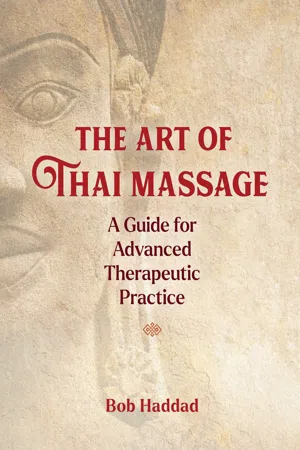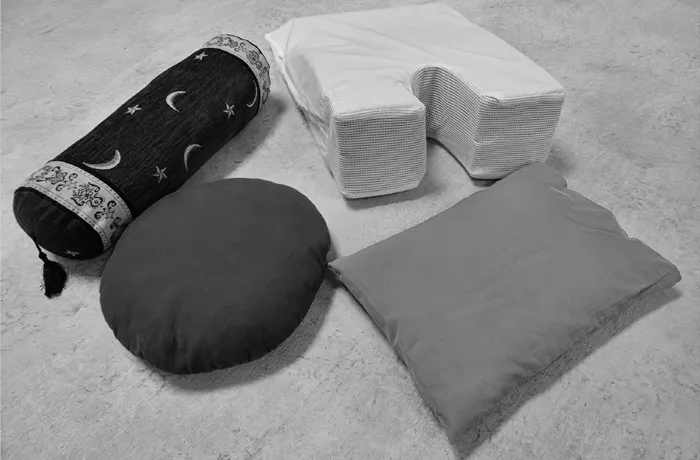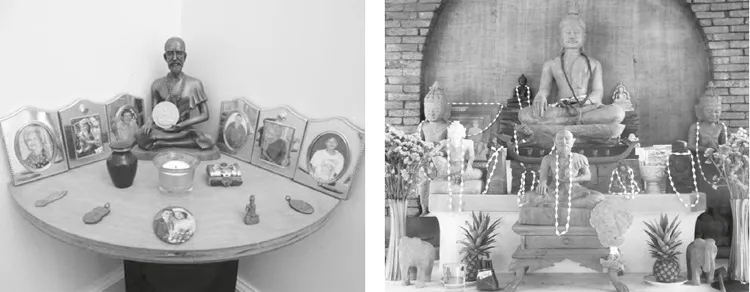I hope you’ll be inspired to review these strategies for practice, and to reconsider the best ways to treat each and every person on an individualized basis.
The Treatment Room
The treatment room is a sacred healing space. It should be equipped and maintained in special ways and provide solace and refuge to those who enter. An element of visual containment and privacy is important, so always keep the space protected, secure, and comfortable. For those who practice in the same room all the time, try to use that place only for massage treatments, yoga, meditation, and similar activities. Keep the room clean, and always remove shoes before entering.
Some therapists travel to offer massage to clients in their homes, or they work in several places and constantly transport a mat and other materials from one place to another. If this is the case, then a separate bag for accessories may be used, and each space can be prepared accordingly before the start of a treatment. In multipurpose spaces, a private area can be demarcated with a folding screen, a curtain, or a draped piece of fabric.
The floor mat
The mat you use for your floor-based treatments is one of the most important components of an effective treatment. It should be firm yet comfortable, as large as possible, kept clean at all times, and covered with a fresh sheet for each session.
Whether your mat is kept in a daily practice room, or you use a portable mat, make sure that it is large and firm. Grooved cotton mats aren’t practical for Thai massage, because knees and feet can’t establish a firm grip on a grooved surface. Also avoid using mats that are sold in several sections or those that are connected on the bottom but have spaces on the top. Finally, don’t use futons made for sofa beds because these are usually too thick and too soft for efficient therapeutic treatment.
Many of the mats that are commercially sold for floor-based bodywork are too small, and they are also quite expensive. If a mat is too narrow, a therapist may have to keep one foot or knee on the mat and the other one on the floor, and this will often contribute to instability. Narrow mats also limit the therapist’s ability to stay at the same height as the receiver. If you are sitting or kneeling even one inch lower than the client, you will constantly have to adjust your balance and body posture in order to compensate for the difference in height. If you have enough space and you generally don’t travel to treat clients in their homes, use the widest mat possible, either queen size (60 x 80 inches / 152 x 203 cm) or king size (76 x 80 inches / 193 x 203 cm). Working on a wide mat allows both people to remain at the same height and on the same surface for almost all postures and techniques.
High-density foam, usually dark in color, is used in furniture and automobile upholstery, and is a viable and affordable option. It can be bought from foam distributors, upholsterers, and exercise companies. The foam mat may be placed on top of a large rug or in a room with wall-to-wall carpeting and then covered with a large cotton sheet with the ends tucked underneath. If you work on a hard surface, you can place an area rug underneath to keep the mat as steady and warm as possible. If you’re working on a floor that is carpeted, you may be able to use a large “mattress topper” as your mat. Memory foam is reasonably priced, and is comfortable yet firm. When placed on top of a thick rug or a sheet of high-density foam, it works very well as a floor therapy mat.
Pillows
Pillows and cushions of several sizes are important for practice. In most cases, the pillows you use will vary according to the client’s body position, whether supine, prone, or side-lying.
For supine position: If your client doesn’t need or want a pillow for her head, don’t use one. Consider using small, thin airline pillows for the head, and only when necessary.1 After working on the lower body in supine position, and before beginning work in the abdominal area, consider placing a tubular pillow or a large rolled towel under your client’s knees. This elevates the upper legs, relaxes the sacrum, and provides a more comfortable position for the client to receive work on the upper body. Small round cushions work well for supporting clients’ knees when using compression techniques on bent legs, or whenever extra support is needed.
For side-lying position: A long and thick pillow for the head is important when the client is lying in side-lying position. The length and thickness provide ergonomic support and keep the neck and spine straight. A tube pillow or a rolled towel can be wedged against the stomach as a “brake” to help keep the body erect. Another smaller pillow can be placed under the upper arm, so it can rest comfortably.
For prone position: Many people can tolerate short periods with their necks twisted to one side in prone position. For longer periods in prone position you could use an angled foam pillow, which raises the upper chest, cradles the head, and has side air vents.
Clockwise from top: angled foam pillow for prone position; small thin head pillow; small round pillow; tubular pillow.
Accessories for for your practice room
Covers and blankets: During massage, the movement of energy as well as periods of inaction can result in the body becoming cold, especially the hands and feet. Consider using a rayon sarong to cover parts of the body that are not touched for extended periods of time. Simply slide the cover up or down the body as you work, and only expose the areas being treated. In colder climates, an electric blanket may be used on top of the mat, underneath the sheet. This helps the receiver to remain warm, and also keeps your own feet and legs warm as you work. Some people may have objections however, so always ask your clients if this is acceptable.
Clothing for client: Keep an assortment of lightweight clothing for your clients to use during treatments. Lightweight, baggy pants, such as Thai fisherman pants, work very well. Use clothing made of natural fibers to maximize your ability to feel muscles and sense energy. It’s also best to avoid buttons and zippers. Keep a few shirts in different sizes for men and women. V-neck and tank-top shirts work well because they allow easy access to the neck and head. In cold weather, ankle socks provide warmth to the soles and tops of the feet without restricting movement. Consider wearing socks yourself whenever you have cold or sweaty feet.
Foot washing supplies: In Thailand, clients are usually asked to wash their feet before receiving a treatment, and may occasionally be washed by the therapist. I remember the first time my feet were washed before a session. I felt humbled and grateful and immediately afterward, I decided to incorporate foot washing into my practice. In addition to the practical aspect of washing a client’s feet, the process also allows a few moments to chat before you begin your work. Ultimately, washing a person’s feet helps to create a mood of relaxation, trust, and peace.
Add a few drops of essential oil to a medium-sized bowl of very hot water (peppermint or lemongrass essential oils work well). Keep a small towel nearby. Soak a washcloth in the hot solution, wring it out, and clean the entire foot. Dry it thoroughly, and repeat on the other foot. If you don’t have access to hot water, you can spray your client’s feet with a natural solution such as those mentioned below.
Air and energy cleaners: Whenever you or your client have experienced a difficult session, or one in which there were energetic or emotional releases, it’s a good idea to cleanse the room. Open a window to allow fresh air to circulate freely, and change the sheet and the pillow cases. Instead of burning incense, spray a lightly scented neutralizing substance into the air. A few drops of essential oil mixed with water and witch hazel (hamamelis) works well, or you can use natural floral waters of rose or orange. A fresh unscented candle on your altar can also help to burn away lingering energies.
Other things: Keep a box of tissues in your treatment room for hygienic needs and for occasional emotional responses. A small towel and some talc or rice flour may be used to dry hands and feet if they become sweaty. If you keep a clock in your room, use an electric one that doesn’t make a ticking noise. If you work with traditional Thai herbal compresses, your steamer will be nearby. Balms, lotions, and essential oils may be kept on a tray near the head of the massage mat. Before each session, pour a fresh glass of water for each client and one for yourself. Keep them nearby, but away from the general working area.
If your client wants to hear music during a treatment, keep it at a very low volume. Avoid using music that is rhythmic or familiar, and instead use music that is airy and has moments of silence. If a client is drawn to a steady beat or a familiar melody, his mind may become focused on the external sounds instead of relaxing into his breath. Music can also distract the therapist and interfere with his ability to hear the client’s breath, which is critically important for proper timing and execution of techniques. Sometimes, silence is best.
Your altar
If possible, and in accordance with Thai tradition, your space should contain an altar, even if it is only a small table or a shelf where a few objects of personal and spiritual significance are kept. Keep it ahead of you in a corner of the room so you can see it as you work with clients in supine position. A good height is 4–5 feet (1.2–1.5 meters). Thai massage altars usually contain statues or images of the Buddha and Jivaka, as well as candles, flowers, and other items. Photos of important teachers and family members (especially deceased people) are common, as well as a small cup of water and symbolic food, such as uncooked rice or a piece of fruit. It’s a good idea to light a candle for each client and to position it at the head of the altar. A tea light placed inside a clear votive cup works well, because each one lasts about two hours, and extinguishes itself neatly in its aluminum cup. If you wish to follow tradition, don’t extinguish a candle flame with your breath. Instead, wet your fingers to put it out, or wave your hand or a piece of paper near the flame.
For the purposes of Thai massage practice, it’s important to have a Jivaka image or statue on the altar, since Jivaka is the ancestor spirit of medicine and healing. If you are inspired by the Buddha and by his words and actions, you may also place a Thai Buddha statue or image on the altar. Buddha is not a God, and Buddhism is more like a way of life rather than a religion, so his presence doesn’t really interfere with other religious beliefs you or others may have.
On a Thai altar, the main figure is always placed in the center as far back as possible. If you use a Buddha image on your altar, it must be centered, placed as far back as possible, and the top of his head must be slightly higher than anything else on the altar. If, for example, your Buddha statue is smaller than another statue or item, simply place it on a stand or on a small box so it appears higher. In addition to centrality, depth, and height, odd-number configurations are also important, with objects in groups of 3, 5, or 7 in front of and alongside the central images. This is where you might keep photos of teachers and parents, mementos, a small candle, and offerings of food, water, and flowers.
Left: a small Jivaka altar on a shelf. Right: a larger Buddha/Jivaka altar.
Note the symmetry, depth of central figures, and items grouped in odd numbers.




